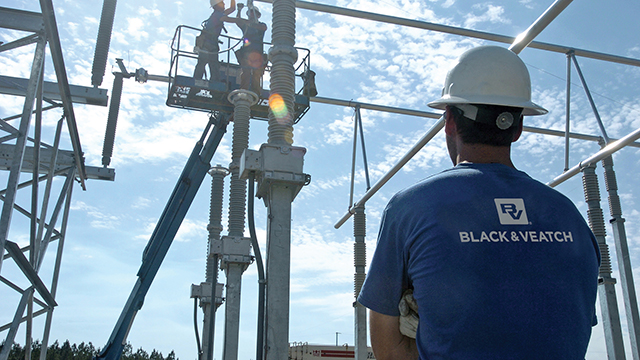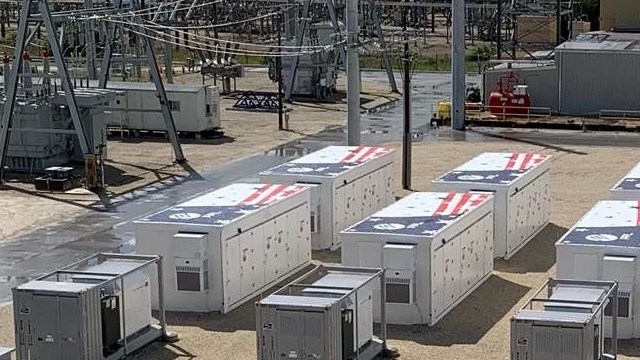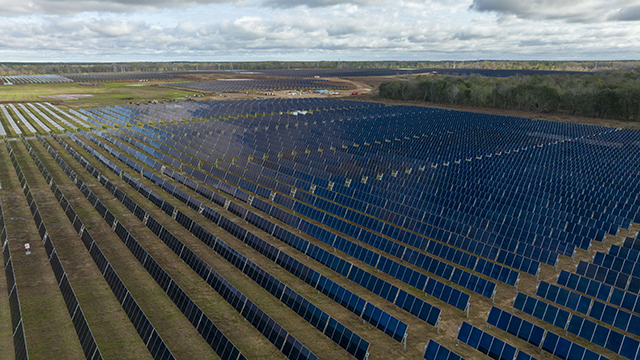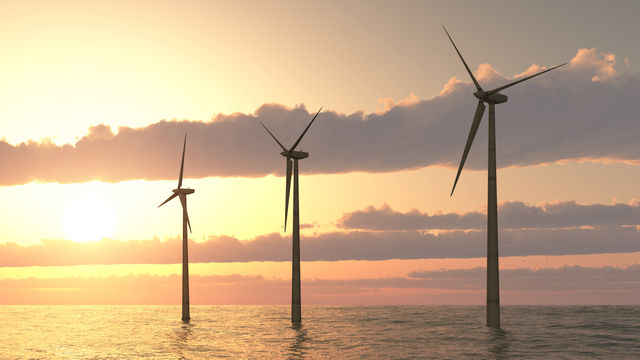Large commercial and industrial complexes are increasingly showing more interest in how power is consumed at their facilities, and how they can more efficiently manage their utility costs. These companies are discovering many options that have only recently opened up due to new technologies and decreasing system costs.
“We’re seeing companies take more of their energy destiny into their own hands by the use of self-generation, rooftop solar, microgrids and battery storage,” said Rick Azer, Associate Vice President of Development for Black & Veatch’s Smart Integrated Infrastructure business. “Commercial and industrial facilities are spending more time understanding the patterns of their electrical usage, trying to become more efficient and more aware of how their usage directly impacts utility costs and fees.”
This hunger for new technologies and energy options is leading to a transformation on how energy flows to users and vice versa, and is part of the growing smart cities movement. Azer said the biggest change is coming from the stationary energy storage market designed for use at large offices and industrial complexes.
“Batteries are playing an increasingly important role to help offset intermittency of renewables and to provide energy storage for time-of-use pricing structures,” Azer said. Large complexes incur peak demand charges by utilities, and energy from battery storage can be used at key times to avoid such costs, therefore helping to pay for themselves.
“Battery systems are uniquely qualified to help offset those peak power demands because they can provide energy for a short period of time when the facilities need it the most, and they’re not pulling it off the grid,” Azer said. “The net result of that is that the peak demand is lowered, as well as the associated demand charges that a facility may incur.”
Smart Energy for Commercial & Industrial Complexes
Adapting to Smart Inverters
Other technologies are changing how campuses and large complexes generate and receive energy. Just as the electric grid is increasingly becoming bidirectional to evolve with more distributed generation, individual facilities need bidirectional inverters – called smart inverters – to help with the two-way movement of power.
“It’s being explored and demonstrated now,” Azer said. “Bidirectional control through smart inverters is needed so you can create your energy and send it out, or you can receive energy for the components that you have. Smart inverters understand both power in and power out. It’s a logical manifestation of the mechanisms that are being put into place.”
Azer said he had the opportunity to watch testing of these units at a large utility’s research laboratory.
“They were testing three or four of the most common manufacturers’ bidirectional controls because the utility wanted to understand what they can do and how they can interact with those pieces of equipment,” Azer said. “Through radio linkage from the smart meter to the inverters, they can communicate, and trigger certain behaviors to happen that benefit the grid.”
Azer emphasized that the electrical grid will always be needed, but what it looks like will dramatically change.
“The grid’s not going away, but the nature of the grid is changing to provide structure and continuity, whether we’re talking about grid-operated elements or facility-operated elements,” he said.
Adapting to Smart Inverters
Other technologies are changing how campuses and large complexes generate and receive energy. Just as the electric grid is increasingly becoming bidirectional to evolve with more distributed generation, individual facilities need bidirectional inverters – called smart inverters – to help with the two-way movement of power.
“It’s being explored and demonstrated now,” Azer said. “Bidirectional control through smart inverters is needed so you can create your energy and send it out, or you can receive energy for the components that you have. Smart inverters understand both power in and power out. It’s a logical manifestation of the mechanisms that are being put into place.”
Azer said he had the opportunity to watch testing of these units at a large utility’s research laboratory.
“They were testing three or four of the most common manufacturers’ bidirectional controls because the utility wanted to understand what they can do and how they can interact with those pieces of equipment,” Azer said. “Through radio linkage from the smart meter to the inverters, they can communicate, and trigger certain behaviors to happen that benefit the grid.”
Azer emphasized that the electrical grid will always be needed, but what it looks like will dramatically change.
“The grid’s not going away, but the nature of the grid is changing to provide structure and continuity, whether we’re talking about grid-operated elements or facility-operated elements,” he said.
Smart Integrated Infrastructure
This transformation of the electric power industry prompted Black & Veatch to create its Smart Integrated Infrastructure (SII) business to bring together two key elements – intelligent infrastructure that has the ability to communicate, and data analytics, which can provide deep insights into operations that allow for actionable decisions.
“Our goal with Smart Integrated Infrastructure is to help our clients maximize the capabilities of these distributed, interconnected systems to increase efficiency, resiliency and performance,” Azer said.
The heart of Smart Integrated Infrastructure lies in its data analytics platform, ASSET360®. ASSET360 gathers and analyzes vast amounts of data to help users understand their system’s behavior. ASSET360 uses this data to detect and diagnose issues and direct action based on what is happening within a utility’s system. The cloud-based platform provides dashboard reporting in a secure environment.
Scott Stallard, Vice President and Director of Smart Analytics for SII, said ASSET360 can also be used to determine best time-of-use for self-generators.
“Time-of-use pricing is a capability we can address,” Stallard said. “We need a proper connection to day- ahead and hour-ahead markets. From there, we can construct a duty profile of the facility, then construct alternative profiles that shift time-of-use to see potential savings and optimal use trade-offs.”
As demand response mechanisms increasingly come into play, large facilities will have a better understanding of the direct impact to their operating costs.
“Eventually, real-time pricing in demand response products will exist, making the opportunity even better to leverage price signals,” Stallard said. “This will alter the nature and timing of energy consumption and storage.”
Move to Microgrids
Some facilities are going beyond rooftop solar or wind, and creating a complete microgrid that can allow for operation off the grid if desired, thereby increasing a facility’s resiliency against disruptions, whether caused by nature or man-made.
“We see microgrids at large hospitals, military bases, industrial facilities, commercial complexes and at colleges and universities,” Azer said. “Microgrids can scale, so that they’re very versatile for a wide array of businesses or government operations.”
In order to experience the operations and benefits of microgrids, Black & Veatch installed a microgrid for its Innovation Pavilion at its World Headquarters in Overland Park, Kan. It features solar PV, geothermal, microturbines and battery storage. Its usage is monitored and controlled by ASSET360.
“It allows us to get close to the real equipment in an operation, so it’s not just spec sheets and performance software – you can see the real impact of it,” said Jason Abiecunas, Distributed Generation Service Area Leader for Black & Veatch’s energy business. “It’s a powerful message to our clients and vendors to say ‘We’re living the same way that you’re living,’ so that we can lead those designs through experience. It also helps to participate in the economics of the energy marketplace.”
Azer said decreasing costs and increasing participation in overall self-generation will become the ‘new normal.’
“As batteries and solar panels drop in cost, and microgrids become more universal, the amount and type of self-generation is only going to increase over time, and Black & Veatch is poised to be actively involved in these markets.”








